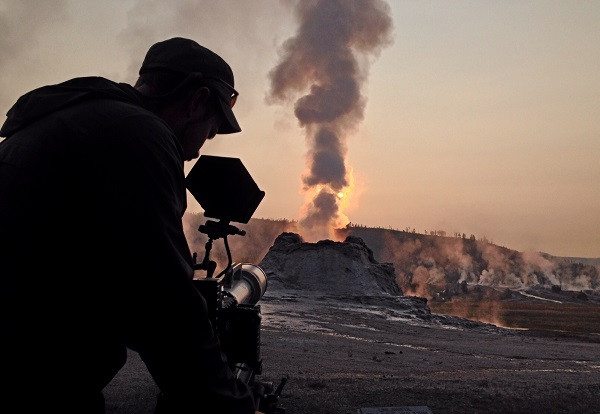JKCF Graduate Scholar Reflection: Wildlife Cameraman Dawson Dunning
 Credit: Dan Socie
Credit: Dan Socie
“It isn’t as easy as pointing a lens at animal behavior anymore,” writes Dawson Dunning. “I want every shot to be a story in itself, every sequence to be something people will remember.”
As amazing as it might seem, Dunning is a full-time freelance wildlife cameraman having earned a Master of Fine Arts in Science and Natural History Filmmaking at Montana State University. The often painstaking process of waiting for a shot, sometimes in freezing temperatures and uncomfortable positions, is more difficult than one might imagine. In recent years the results have gotten better and better, as evidenced by such series as “Planet Earth” and Dawson’s most recent work for the BBC, “Life Story.”
The Jack Kent Cooke Foundation Graduate Scholar and Northwest Regional Emmy Award winner reflects on his education and what has been a profoundly exciting profession in the short piece below.
To watch his camerawork on the recent PBS – Nature film “Touching the Wild,” click here. You can also check out 3 Bears Media, Dawson and his wife’s Livingston, Montana-based outdoors video production company.

After graduating from Montana State University’s Science and Natural History Filmmaking MFA program I have endeavored to be a full-time freelance wildlife cameraman. Now I spend nearly 200 days in the field every year working as a cinematographer. It’s honestly the best job I could imagine, and it seemed such a far-fetched dream when I was a wildlife biology undergraduate and watching the likes of David Attenborough shows. But I’ve learned it’s also an extremely taxing profession and some days are absolutely brutal, like waiting all night in a blind for a mountain lion to return to a fresh kill in subzero temperatures. But the rewards usually outweigh the pain and sacrifice. At least that’s what I tell myself.
I strive to bring a level of artistry to wildlife filming that has quickly been evolving since the days of “Planet Earth” and other remarkable wildlife programs. The camerawork on these shows continues to get better and better and it isn’t as easy as pointing a lens at animal behavior anymore. I want every shot to be a story in itself, every sequence to be something people will remember.
Recently I have been involved in many high-end natural history productions broadcasting on BBC, National Geographic, Discovery and PBS. It’s always a thrill to see your hard work on screen and perhaps the highlight of my career so far has been the opportunity to have two sequences narrated by David Attenborough for the BBC’s “Life Story” series that is currently airing in the UK on BBC One. I filmed sharptailed grouse dancing on breeding grounds in Montana and pika storing “hay” for the winter in Alberta. I spent most of 2014 shooting for a two-part Yellowstone wildlife series that will air on NatGeo WILD next year and was co-director of photography on a Passion Planet film called “Touching The Wild” about Joe Hutto’s remarkable relationship with a wild mule deer herd. “Touching the Wild” broadcast on the PBS NATURE strand earlier this year and recently won best natural history program at Banff Mountain Film Festival.
 Credit: Ryan Jon Sheets
Credit: Ryan Jon Sheets
Another recent highlight was working with fellow alumni and students of the MSU film program on “Indian Relay,” a story about Native American horse racing. It went on to be broadcast on PBS Independent Lens and won regional Emmys for both cinematography and cultural documentary. It was my second Emmy, the first being for camerawork on the acclaimed “Untamed Americas” series for National Geographic which helped jump-start my career.
In 2015 I will be filming for a variety of shows including an exciting new wildlife series for the BBC, and many other projects are in the works.
Visit 3 Bears Media on Instagram, Twitter & Facebook
As a result of the support from the Jack Kent Cooke Foundation Graduate Scholarship, I was able to fast-track into my current career. The connections I made at Montana State University and in the wildlife film industry while a graduate student was the catalyst for realizing my dream. Now my wife and I run our own production company in Livingston, Montana, 3 Bears Media.
When I’m out in the hills waiting days on end for a scene to develop or an animal to show itself, I often reflect on what got me here—and that I actually get paid to do this job! I owe much of that to the Jack Kent Cooke Foundation. Truly, thank you.